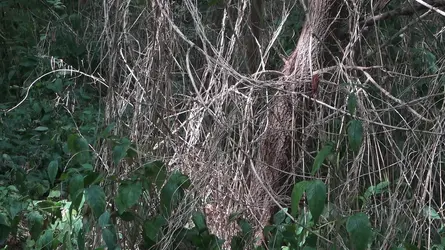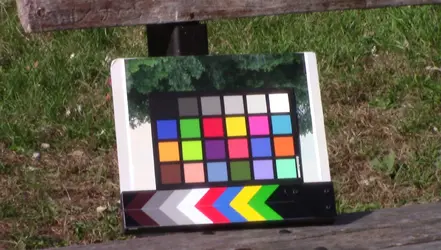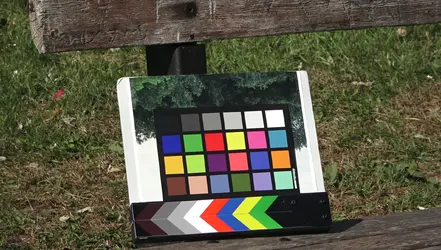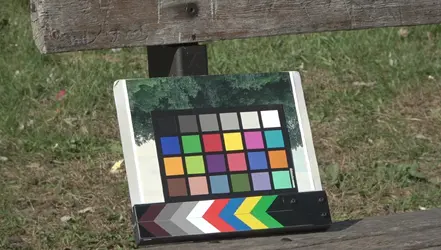VidThreeNorth
No longer a newbie, moving up!
- Joined
- Oct 21, 2016
- Messages
- 1,504
- Reaction score
- 426
- Can others edit my Photos
- Photos NOT OK to edit
[2020-10-14 21:45 Changed the name of this topic from "Guess the Mystery Camera", since I have identified it.]
A Fun Mystery: Can you Guess the Camera, Lens and recording settings?
I was recently testing a camera's video capabilities and you might find this fun and educational. These are samples from test files taken on two occasions. All files are maximum detail JPEGs ("C1" compression). The first test clip was "Full HD" and the second test clip was "Ultra HD". There was so much detail that I had to resize some images below "Full HD" in order to make them small enough to upload.
If you want to post your guesses, post them as comments as usual. I will post the actual details after a week (assuming I remember) .
.
"01-Cap-C00018-18h05m06s107-C1.jpg"
The first file was a "FullHD". The "01" image is the direct capture.
"02-Pro-C00018-18h05m06s107b-Rsz1600-C1.jpg"
The "02" file is my standard process. Unfortunately it had too much detail to be uploaded so I resized it down to 1600.
"03-Cap-C00005-15h17m11s469-Rsz1904-C1.jpg"
The "03" image was recorded in a 4K file, so the capture could not be uploaded in its full size. "03"was resized down to 1904 wide before compression. I could have resized to to 1980, but I decide to make it the same size as the "05" file.
"04-Crop-C00005-15h17m11s469-Detail01-C1.jpg"
The "04" file is a detail crop taken from "03".
"05-Pro-C00005-15h17m11s469b-Rsz1904-C1.jpg"
Like the "02" file above, when I applied my standard processing the "03" file, the resulting file became too large to upload as a 1920 wide image, and so I had to resize it down to 1904 wide so it would upload. As I explained above, this is why I resized the original capture file down to 1904 wide -- to make it the same size as this one.
[2020-09-26 20:49]
I actually have a wider selection of clips, but I did not want to upload a lot of samples in this game, but I decided to add a sample from a more "standard" clip.
"06-Cap-20h12m09s880-rsz1900-C1.jpg"
Again, the captured frame had too much detail when reduced to 1920 wide, so I further reduced it to 1900 wide. No adjustments have been made -- not even straightening the tilt.
"07-Crop-20h12m09s880-rsz1920-C1.jpg"
This detail crop is a "worst case" scenario because of the quick flowing river. It is one of the hardest things to capture in a video frame. People who do a lot of video work will know that the river actually looks fine when viewed at speed. In fact, the whole image looks really good when viewed at speed -- except for the tilt.
[2021-11-28 2:14]
More coverage of the FDR-AX53 at:
"Sony FDR-AX53 (SV-E10?) and Shure VP83F with Dead-Cat v. Wind"
"Sony FDR-AX53 (SV-E10?) and Shure VP83F with Dead-Cat v. Wind"
A Fun Mystery: Can you Guess the Camera, Lens and recording settings?
I was recently testing a camera's video capabilities and you might find this fun and educational. These are samples from test files taken on two occasions. All files are maximum detail JPEGs ("C1" compression). The first test clip was "Full HD" and the second test clip was "Ultra HD". There was so much detail that I had to resize some images below "Full HD" in order to make them small enough to upload.
If you want to post your guesses, post them as comments as usual. I will post the actual details after a week (assuming I remember)
"01-Cap-C00018-18h05m06s107-C1.jpg"
The first file was a "FullHD". The "01" image is the direct capture.
"02-Pro-C00018-18h05m06s107b-Rsz1600-C1.jpg"
The "02" file is my standard process. Unfortunately it had too much detail to be uploaded so I resized it down to 1600.
"03-Cap-C00005-15h17m11s469-Rsz1904-C1.jpg"
The "03" image was recorded in a 4K file, so the capture could not be uploaded in its full size. "03"was resized down to 1904 wide before compression. I could have resized to to 1980, but I decide to make it the same size as the "05" file.
"04-Crop-C00005-15h17m11s469-Detail01-C1.jpg"
The "04" file is a detail crop taken from "03".
"05-Pro-C00005-15h17m11s469b-Rsz1904-C1.jpg"
Like the "02" file above, when I applied my standard processing the "03" file, the resulting file became too large to upload as a 1920 wide image, and so I had to resize it down to 1904 wide so it would upload. As I explained above, this is why I resized the original capture file down to 1904 wide -- to make it the same size as this one.
[2020-09-26 20:49]
I actually have a wider selection of clips, but I did not want to upload a lot of samples in this game, but I decided to add a sample from a more "standard" clip.
"06-Cap-20h12m09s880-rsz1900-C1.jpg"
Again, the captured frame had too much detail when reduced to 1920 wide, so I further reduced it to 1900 wide. No adjustments have been made -- not even straightening the tilt.
"07-Crop-20h12m09s880-rsz1920-C1.jpg"
This detail crop is a "worst case" scenario because of the quick flowing river. It is one of the hardest things to capture in a video frame. People who do a lot of video work will know that the river actually looks fine when viewed at speed. In fact, the whole image looks really good when viewed at speed -- except for the tilt.
[2021-11-28 2:14]
More coverage of the FDR-AX53 at:
"Sony FDR-AX53 (SV-E10?) and Shure VP83F with Dead-Cat v. Wind"
"Sony FDR-AX53 (SV-E10?) and Shure VP83F with Dead-Cat v. Wind"
Attachments
-
 01-Cap-C00018-18h05m06s107-C1.webp487.3 KB · Views: 282
01-Cap-C00018-18h05m06s107-C1.webp487.3 KB · Views: 282 -
 02-Pro-C00018-18h05m06s107b-Rsz1600-C1.webp498.8 KB · Views: 223
02-Pro-C00018-18h05m06s107b-Rsz1600-C1.webp498.8 KB · Views: 223 -
 03-Cap-C00005-15h17m11s469-Rsz1904-C1.webp174.5 KB · Views: 217
03-Cap-C00005-15h17m11s469-Rsz1904-C1.webp174.5 KB · Views: 217 -
 04-Crop-C00005-15h17m11s469-Detail01-C1.webp163.8 KB · Views: 225
04-Crop-C00005-15h17m11s469-Detail01-C1.webp163.8 KB · Views: 225 -
 05-Pro-C00005-15h17m11s469b-Rsz1904-C1.webp239.4 KB · Views: 233
05-Pro-C00005-15h17m11s469b-Rsz1904-C1.webp239.4 KB · Views: 233 -
 06-Cap-20h12m09s880-rsz1900-C1.webp441.5 KB · Views: 213
06-Cap-20h12m09s880-rsz1900-C1.webp441.5 KB · Views: 213 -
 07-Crop-20h12m09s880-rsz1920-C1.webp350.8 KB · Views: 221
07-Crop-20h12m09s880-rsz1920-C1.webp350.8 KB · Views: 221
Last edited:















![[No title]](/data/xfmg/thumbnail/37/37604-7ad625e983f92f880eb65a264eeef5e4.jpg?1734170732)
![[No title]](/data/xfmg/thumbnail/37/37605-90c8efaef5b7d1f52d4bf8e7dfd33673.jpg?1734170732)

![[No title]](/data/xfmg/thumbnail/37/37603-739c5d9b541a083a12f2f30e45ca2b7b.jpg?1734170731)
![[No title]](/data/xfmg/thumbnail/36/36421-843e629a8c32ff091e337e6880f0c323.jpg?1734168831)






